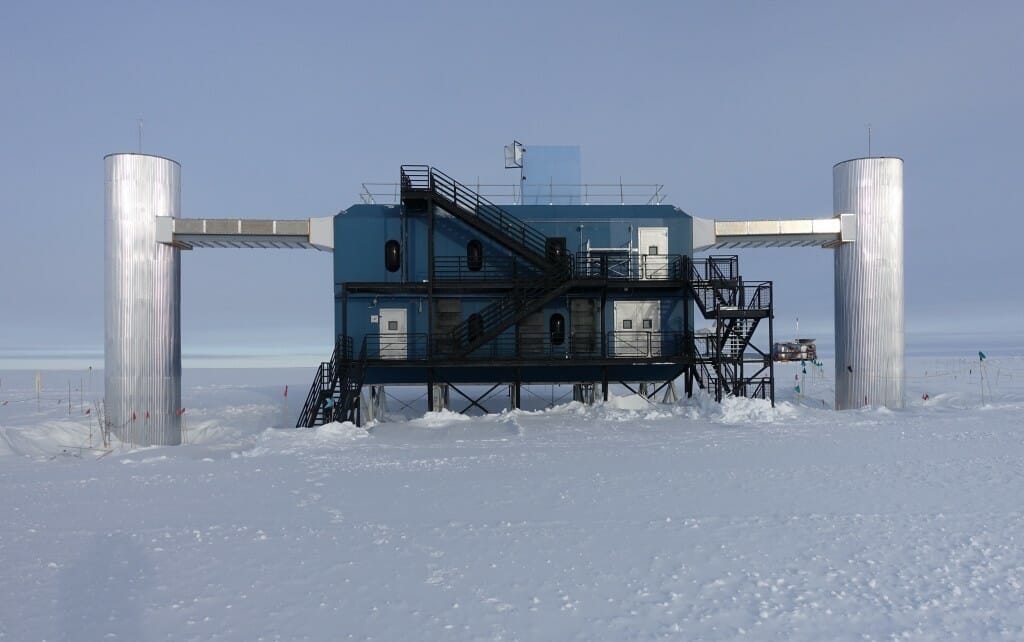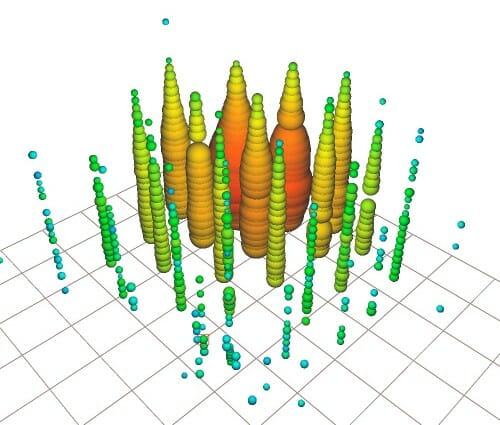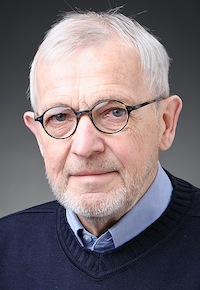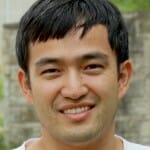IceCube detection of high-energy particle proves 60-year-old physics theory

The electron antineutrino that created the Glashow resonance event traveled quite a distance before reaching IceCube. This graphic shows its journey; the blue dotted line is the antineutrino’s path. IceCube Collaboration
On Dec. 8, 2016, a high-energy particle hurtled to Earth from outer space at close to the speed of light. The particle, an electron antineutrino, smashed into an electron deep inside the ice sheet at the South Pole. This collision produced a particle that quickly decayed into a shower of secondary particles, triggering the sensors of the IceCube Neutrino Observatory, a massive telescope buried in the Antarctic glacier.
IceCube had seen a Glashow resonance event, a phenomenon predicted by Nobel laureate physicist Sheldon Glashow in 1960. With this detection, scientists provided another confirmation of the Standard Model of particle physics. It also further demonstrated the ability of IceCube, which detects nearly massless particles called neutrinos using thousands of sensors embedded in the Antarctic ice, to do fundamental physics. The result was published March 10 in Nature.
Glashow first proposed this resonance in 1960 when he was a postdoctoral researcher at what is today the Niels Bohr Institute in Copenhagen, Denmark. There, he wrote a paper in which he predicted that an antineutrino — a neutrino’s antimatter twin — could interact with an electron to produce an as-yet undiscovered particle through a process known as resonance. The key was that the antineutrino had to have a precise energy to produce this resonance.

The IceCube Laboratory at the South Pole. This building holds the computer servers that collect data from IceCube’s sensors under the ice. John Hardin, IceCube/NSF
When the proposed particle, the W-minus boson, was finally discovered in 1983, it turned out to be much heavier than what Glashow and his colleagues had expected back in 1960. The Glashow resonance would require a neutrino with an energy of 6.3 petaelectronvolts, almost 1,000 times more energetic than what CERN’s Large Hadron Collider is capable of producing. No human-made particle accelerator on Earth, current or planned, can create a neutrino with that much energy.
Yet the enormous energies of supermassive black holes at the centers of galaxies and other extreme cosmic events can generate particles with energies impossible to create on Earth. Such a phenomenon was likely responsible for the antineutrino that reached IceCube in 2016, which smashed into Earth with an energy of 6.3 PeV — precisely as Glashow’s theory predicted.
“When Glashow was a postdoc at Niels Bohr, he could never have imagined that his unconventional proposal for producing the W-minus boson would be realized by an antineutrino from a faraway galaxy crashing into Antarctic ice,” says Francis Halzen, principal investigator of IceCube and professor of physics at the University of Wisconsin–Madison, the headquarters of IceCube maintenance and operations.
Since IceCube started full operation in May 2011, the observatory has detected hundreds of high-energy astrophysical neutrinos and has produced a number of significant results in particle astrophysics, including the discovery of an astrophysical neutrino flux in 2013 and the first identification of a source of astrophysical neutrinos in 2018. The Glashow resonance event is noteworthy because of its extremely high energy. It is only the third event detected by IceCube with an energy greater than 5 PeV.
This result was a collaborative effort achieved by a team of three scientists: Lu Lu from Chiba University in Japan, now at UW–Madison, Tianlu Yuan from UW–Madison, and Christian Haack from RWTH Aachen University, now at TU Munich.
The Glashow resonance detection is the first individual neutrino proven to be of astrophysical origin. It also demonstrates IceCube’s unique contributions to multimessenger astrophysics, which uses light, particles and gravitational waves to study the cosmos. The result also opens up a new chapter of neutrino astronomy because it starts to disentangle neutrinos from antineutrinos.
“Previous measurements have not been sensitive to the difference between neutrinos and antineutrinos, so this result is the first direct measurement of an antineutrino component of the astrophysical neutrino flux,” says Lu, one of the main analyzers of this paper.
“There are a number of properties of the astrophysical neutrinos’ sources that we cannot measure, like the physical size of the accelerator and the magnetic field strength in the acceleration region,” says Yuan, an assistant scientist at the Wisconsin IceCube Particle Astrophysics Center and another main analyzer. “If we can determine the neutrino-to-antineutrino ratio, we can directly investigate these properties.”
The result also demonstrates the value of international collaboration. IceCube is operated by over 400 scientists, engineers, and staff from 53 institutions in 12 countries, together known as the IceCube Collaboration. The main analyzers on this paper worked together across Asia, North America, and Europe.

A visualization of the Glashow event recorded by the IceCube detector. Each colored circle shows an IceCube sensor that was triggered by the event; red circles indicate sensors triggered earlier in time, and green-blue circles indicate sensors triggered later. This event was nicknamed “Hydrangea.” IceCube Collaboration
To confirm the detection and make a decisive measurement of the neutrino-to-antineutrino ratio, the IceCube Collaboration wants to see more Glashow resonances. A proposed expansion of the IceCube detector, IceCube-Gen2, would enable the scientists to make such measurements in a statistically significant way. The collaboration recently announced an upgrade of the detector that will be implemented over the next few years, the first step toward IceCube-Gen2.
Glashow, now an emeritus professor of physics at Boston University, echoes the need for more detections of his eponymous resonance events.
“To be absolutely sure, we should see another such event at the very same energy as the one that was seen,” he says. “So far there’s one, and someday there will be more.”
This work was supported in part by the National Science Foundation (grants OPP-1600823 and PHY-191360.




